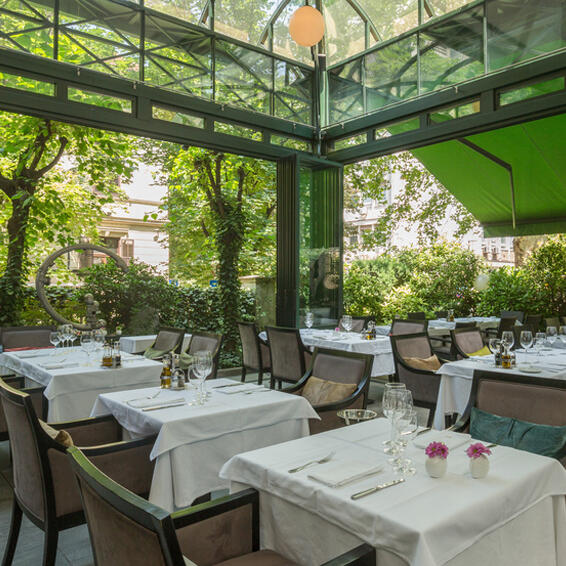Discover how to make a restaurant eco-friendly

The restaurant industry is becoming increasingly greener. Yes! The eco-friendly trend has come to restaurants, and we are celebrating and supporting it here at TheFork. The fact is that we are increasingly more conscious about the impact of our activities and the price the environment pays so that our restaurants can have full tables.
Customers also form an important part of this change. Nowadays, diners demand that industries show a commitment to the environment and prefer restaurants who do so. This means we have compelling reasons to tailor ourselves to this global need, do it as soon as possible and do it right.
If your restaurant is sustainable, congratulations! We are glad that it is sustainable and already tailored for the future. If that is not the case, here are some recommendations to begin. For more green restaurants!
What is an eco-friendly restaurant?
A restaurant that is not only interested in serving food and making money but also takes responsibility for its social impact, adopting measures to reduce the footprint of their activities and promote more sustainable consumption that is in harmony with nature.
It is a restaurant with sustainable management systems and materials and a food selection based on products that respect animal welfare and sustainable agriculture.
The fact is that transforming a traditional restaurant into an eco-friendly one is a huge change that entails reassessing the majority of processes like we do them today and adopting new ones. However, the internal and external benefits are enormous. How do you do it? Keep reading.
Ideas for being an eco-friendly restaurant
Cook seasonal food according to the day's fresh products and with local suppliers. Have zero-kilometer suppliers and base the menu on these products, as well as on natural ingredients, even if they are exotic.
Ensure that these suppliers are fair trade, use biodegradable materials for their deliveries and agree to make timely shipments to reduce fuel emissions.
Bring back traditional cooking systems such as smoking, pickling, marinating or fermenting and have more artisan processes.
Reduce waste to turn them into ingredients again. For instance, you can use the trash cooking technique, where a very ripe tomato that is not useful for salads is used for a sauce.
Strictly manage stock and expiration dates. With a good labeling and storage system, waste can be greatly reduced and you can cook based on it.
Serve quantities according to customers' actual consumption levels. This also reduces waste, and just the right amount is cooked.
Have a special recycling and compost station at the kitchen. Properly separate the leftovers, organize them and ensure that they are properly collected. It is the most surefire way to reduce part of the restaurant's carbon footprint.
Donate leftover food and help increase local business. Make alliances with companies and associations that distribute these leftovers.
Install water-saving equipment. For starters, you should obtain water-saving toilets and an internal filtration system to avoid bottled water.
Install energy-efficient equipment. Have low-consumption lighting, air conditioning, ventilation, refrigeration and cooking equipment.
Use chemical-free products for cleaning. Free of contaminating agents both for the environment and for the health of customers.
Use sustainable furniture and utensils. Furniture made of recycled or more eco-friendly material and avoid plastic and polystyrene foam on cups, straws, etc. as much as possible.
Prefer open kitchens. Eco-friendly restaurants also promote transparency and customers appreciate when they can always see how the food is being prepared.
Have trained and educated staff. It is crucial that the entire team understand and apply the sustainable measures and can provide top-notch service.
Actively participate in eco-friendly activities. Share experiences with other local businesses that fight for a greener industry and get involved in the measures that they propose.
Lastly, don't forget to promote all your eco-friendly activities on your restaurant's profile on TheFork and make it visible for our entire community. Click here if you are still not on our platform
The present and future are green, and we restaurants cannot be left behind because of both the economic improvements that it entails in every sense and particularly because it contributes to the planet's harmony. Amen to that!













